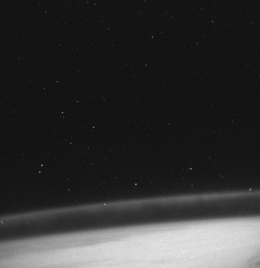Seeing stars, Proba-2 platform passes its first health check

(PhysOrg.com) -- Into its second week in orbit, Proba-2's spacecraft platform has proven to be in excellent health. This leaves the way clear for commissioning the many new technology payloads aboard the mini-satellite, among the smallest ever flown by ESA.
As ESA's full-sized Soil Moisture and Ocean Salinity (SMOS) mission soared skyward by Rockot launcher on 2 November, it had a smaller companion. Piggybacking along was Proba-2, which occupies less than a cubic metre in volume with only one fifth of SMOS's mass.
But Proba-2 is just as complex as a standard mission - it is second in the Proba (Project for Onboard Autonomy) series of satellites, providing low-cost flight testing opportunities to European industry. The satellite carries 17 separate technology experiments and four scientific instruments. All of them require careful commissioning, but first the stability of their host spacecraft must be assured.
"As a first step we have successfully tested the platform safe mode including all platform-critical units," explains Karsten Strauch Proba-2 Project Manager "This includes all attitude and orbital control systems (AOCS), including Proba-2's star tracker."
Proba-2's career in space began some four hours and fifty minutes after launch, when it separated from its Breeze-KM third stage. As is typical, separation left the satellite tumbling, but the spacecraft autonomously managed to reduced its spin using an onboard magnetometer to align Proba-2 along Earth's magnetic field.
This flight mode will also serve as Proba-2's 'safe mode' - to which it reverts in the event of serious malfunction. It also places Proba-2 into approximate alignment with the Sun, its solar panels being deployed five minutes after separation.
On Tuesday an onboard GPS receiver was switched on then on the following day its primary star tracker was activated. In the same way that sailors once relied on constellations to steer their course, star trackers automatically fix a satellite's position and direction against the stars they observe.
Proba-2's 'Micro Advanced Stellar Compass' is half the mass of Proba-1's star tracker, with increased radiation resistance, four camera heads instead of the standard two and active pixel sensors for increased sensitivity. It is also fully autonomous, able to establish its position with no additional input. Test images revealed a striking view of Earth's atmospheric 'limb', and more importantly the stars shining around it.
Also performed in Proba-2's first week were 'automatic pass flows' of data between the satellite and Redu, as well as ESA's Svalbard ground station - Proba-2 being designed to operate as autonomously as possible - as well as additional AOCS switch-ons.
Proba-2's second week saw the first switch to solar observation mode - the main mode of its working life, requiring trickier three-axis stabilisation.
The satellite's two Sun-viewing scientific instruments will be switched on by this weekend in order to perform health checks: Sun Watcher using APS detectors and image Processing (SWAP) observes the roughly one-million degree coronas of the Sun as they extend far out to space while the Lyman Alpha Radiometer (LYRA) monitors solar UV radiation on a continuous basis.
"As well as testing and characterising the Sun pointing mode we are now starting to perform a first health check on the payloads and technology demonstrators," adds Mr Strauch. "More elaborate commissioning tests will follow in the mission's second month."
Provided by European Space Agency (news : web)





















